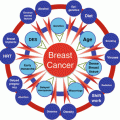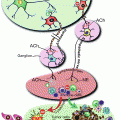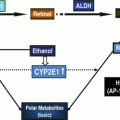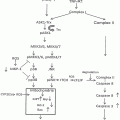Fig. 19.1
Schematic representation illustrating the different molecular targets of resveratrol in head and neck squamous cell cancer
Grant Support:
Supported by grants to R. Sclafani from the Fanconi Anemia Research Foundation and the University of Colorado Cancer Center.
References
1.
2.
Balbo S, Meng L et al (2012) Kinetics of DNA adduct formation in the oral cavity after drinking alcohol. Cancer Epidemiol Biomarkers Prev 21(4):601–608PubMedCentralPubMedCrossRef
3.
4.
5.
6.
Buonocore D, Lazzeretti A et al (2012) Resveratrol-procyanidin blend: nutraceutical and antiaging efficacy evaluated in a placebocontrolled, double-blind study. Clin Cosmet Investig Dermatol 5:159–165PubMedCentralPubMedCrossRef
7.
8.
Connell PP, Jayathilaka K et al (2006) Pilot study examining tumor expression of RAD51 and clinical outcomes in human head cancers. Int J Oncol 28(5):1113–1119PubMed
9.
10.
11.
12.
Derry MM, Raina K et al (2013) Identifying molecular targets of lifestyle modifications in colon cancer prevention. Front Oncol 3:119PubMedCentralPubMedCrossRef
13.
Dudek AZ, Lesniewski-Kmak K et al (2009) Phase I study of bortezomib and cetuximab in patients with solid tumours expressing epidermal growth factor receptor. Br J Cancer 100(9):1379–1384PubMedCentralPubMedCrossRef
14.
15.
16.
17.
Freedman ND, Schatzkin A et al (2007) Alcohol and head and neck cancer risk in a prospective study. Br J Cancer 96(9):1469–1474PubMedCentralPubMed
18.
Freudlsperger C, Burnett JR et al (2010) EGFR-PI3K-AKT-mTOR signaling in head and neck squamous cell carcinomas: attractive targets for molecular-oriented therapy. Expert Opin Ther Targets 15(1):63–74PubMedCentralPubMedCrossRef
19.
20.
21.
22.
23.
Hira A, Yabe H et al (2013) Variant ALDH2 is associated with accelerated progression of bone marrow failure in Japanese Fanconi anemia patients. Blood 122(18):3206–3209PubMedCentralPubMedCrossRef
Stay updated, free articles. Join our Telegram channel

Full access? Get Clinical Tree








